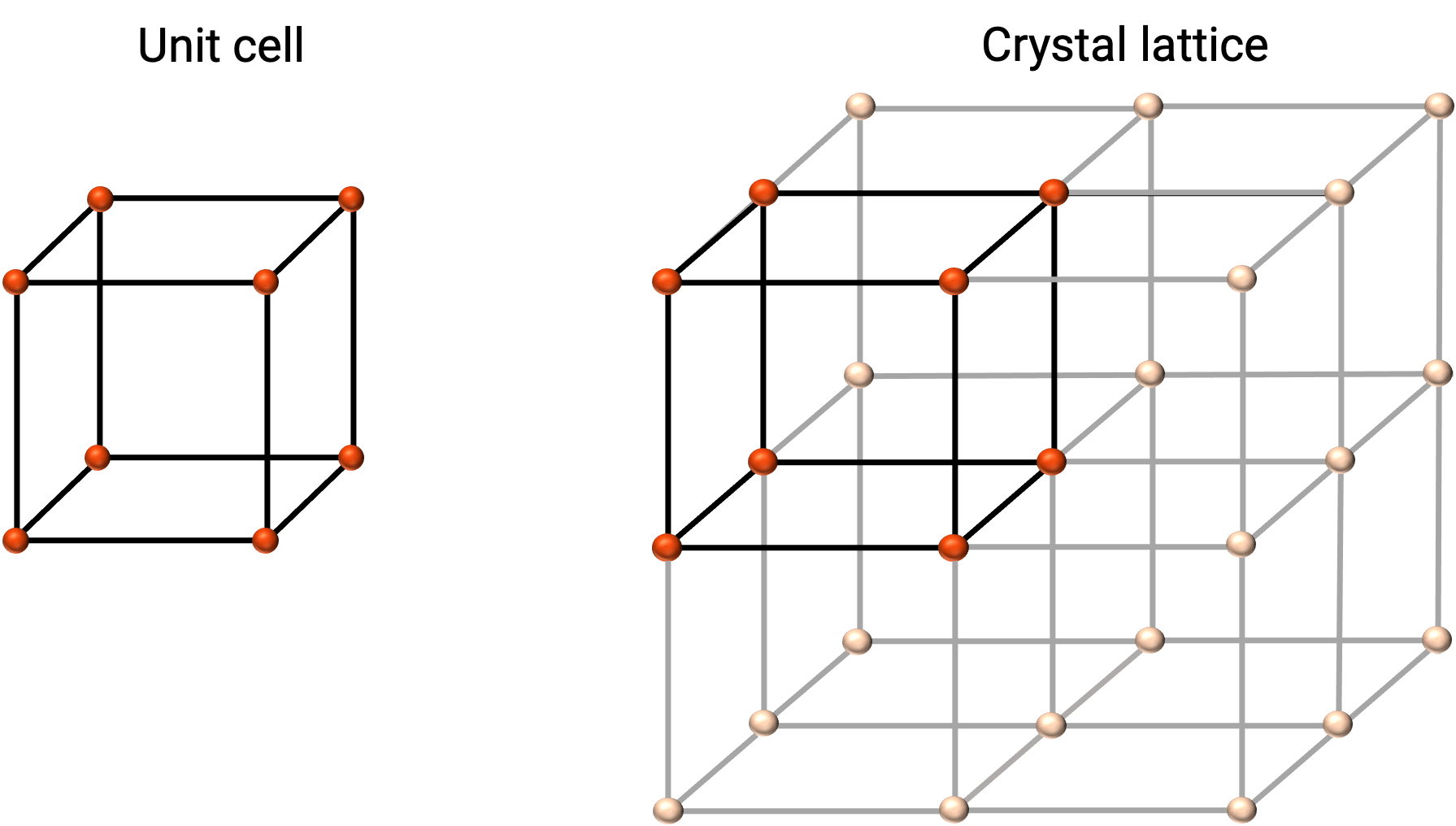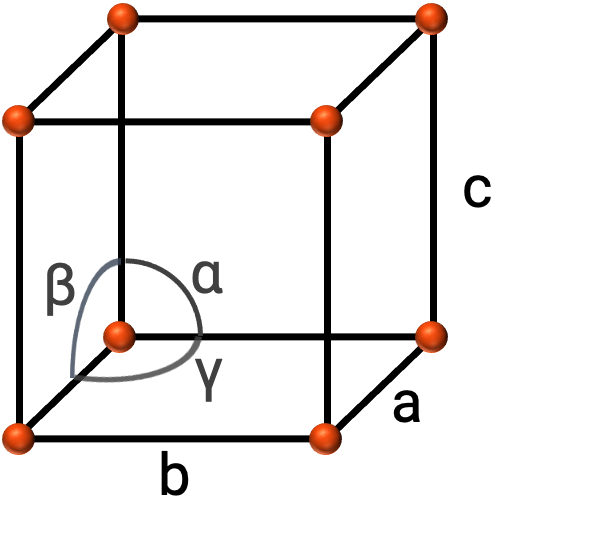11.14:
Structures of Solids
Solids are classified as either amorphous or crystalline on the basis of their three-dimensional internal structure.
Amorphous solids like fused silica glass lack an ordered internal arrangement of their constituent particles, whereas crystalline solids like quartz have their constituent particles arranged in a repeating three-dimensional pattern throughout the solid.
The structure of a crystalline solid is represented by a unit cell, which is the smallest repeating unit of the crystalline structure that retains the symmetry of the structure.
The overall three-dimensional pattern is known as a crystal lattice, which is composed of lattice points and lattice vectors. The lattice vectors delineate the edges of the unit cell, and the lattice points may be at the corners, on the faces, or at the center of the unit cell.
Lattice systems are defined by the dimensions of the unit cell. There are 7 types of lattice systems: cubic, tetragonal, orthorhombic, rhombohedral, monoclinic, triclinic, and hexagonal.
The positions of the atoms in a unit cell are not necessarily the same as those of the lattice points. The pattern of atoms in the unit cell, or motif, is often defined in terms of the locations of the atoms relative to a given lattice point.
The number of atoms in a unit cell reflects the packing efficiency of the solid, or the amount of its volume occupied by atoms rather than the space between them. A higher number of atoms in the unit cell generally corresponds to more efficient packing.
Atoms assigned to a unit cell may not be wholly contained within the cell. One way to count these partial atoms is to consider each atom on a corner as one-eighth of an atom and each atom on a face as one-half of an atom.
Alternatively, if a unit cell has an atom on each corner, one is assigned to the unit cell and the other seven are ignored. If a unit cell has an atom on each of two faces, one is assigned to the unit cell and the other is ignored.
11.14:
Structures of Solids
Solids in which the atoms, ions, or molecules are arranged in a definite repeating pattern are known as crystalline solids. Metals and ionic compounds typically form ordered, crystalline solids. A crystalline solid has a precise melting temperature because each atom or molecule of the same type is held in place with the same forces or energy. Amorphous solids or non-crystalline solids (or, sometimes, glasses) which lack an ordered internal structure and are randomly arranged. Substances that consist of large molecules, or a mixture of molecules whose movements are more restricted, often form amorphous solids. Amorphous material undergoes gradual softening, over a range of temperatures, due to the structural non-equivalence of the molecules. When an amorphous material is heated, the weakest intermolecular attractions break first. As the temperature is increased further, the stronger attractions are broken.
Unit Cell
The structure of a crystalline solid is best described by its simplest repeating unit, referred to as its unit cell. The unit cell consists of lattice points that represent the locations of atoms or ions. The entire structure then consists of this unit cell repeating in three dimensions, as illustrated in Figure 1.

Figure 1. Unit cell and crystal lattice with lattice points indicated in red.
In general, a unit cell is defined by the lengths of three axes (a, b, and c) and the angles (α, β, and γ) between them as shown in Figure 2. The axes are defined as being the lengths between points in the space lattice.

Figure 2. Unit cell is defined by its axes (a, b, and c), and angles (α, β, and γ)
There are seven different lattice systems, some of which have more than one type of lattice, for a total of fourteen different unit cells.
| Systems | Angles | Axes |
| Cubic | α = β = γ = 90° | a = b = c |
| Tetragonal | α = β = γ = 90° | a = b ≠ c |
| Orthorhombic | α= β = γ = 90° | a ≠ b ≠ c |
| Monoclinic | α = γ = 90°; β ≠ 90° | a ≠ b ≠ c |
| Triclinic | α ≠ β ≠ γ ≠ 90° | a ≠ b ≠ c |
This text is adapted from Openstax, Chemistry 2e, Section 10.6: Lattice Structures in Crystalline Solids.
